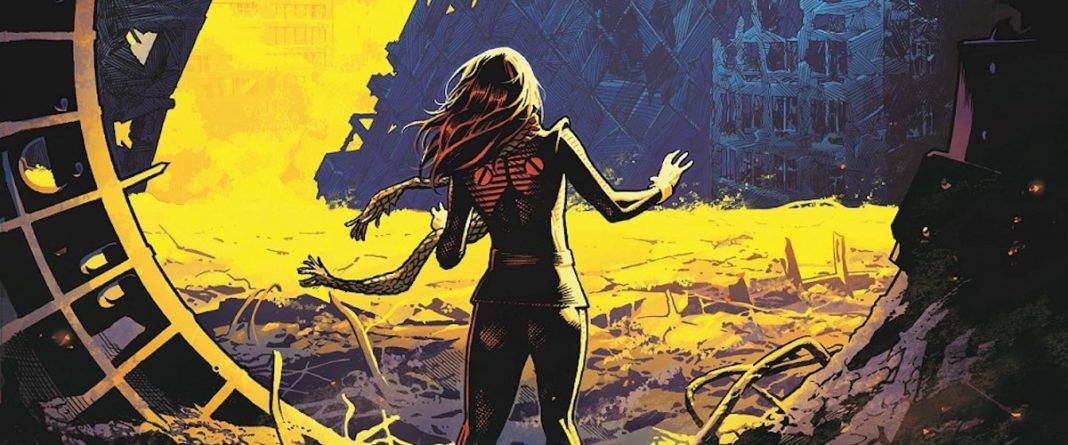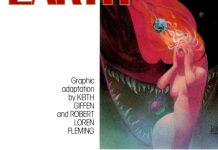So you want to learn more about the Legion of Super-Heroes? Maybe the new comic piqued your interest, or maybe you were intrigued by the characters that have been introduced on the Supergirl TV show, or you might have caught them in the Justice League vs The Fatal Five animated movie. Whatever brings your interest to the team, Legion history can be really daunting, with the numerous reboots and the sixty years of history that go with it. Luckily, I’m here to break down some great places to dive in and some great story-arcs along the way.
The Basics
First, just who are the Legion of Super-Heroes? While the details change a bit from era to era, the core concept remains the same. The Legion is a group of teenagers from one thousand years in the future banding together from across the galaxy to fight against injustice. Usually they are inspired by the stories of Superboy or Superman, but sometimes they are inspired by old comic books or in one occasion, Mon-El instead. The membership is vast, and most of the team have unique powers that are bestowed upon them by their planet of origin (or sometimes by a giant space whale).
The Beginning
I mean, why not? The beginning is usually the best place to start, right? Well the biggest reason why not, is that the beginning is very Silver Age. But if you don’t mind your stories a little silly, sometimes corny and without a whole lot of connected story-lines, it’s still a great entry point. The Legion of Super-Heroes were introduced in Adventure Comics #247, way back in 1958. The team then appeared sporadically in Adventure and Action Comics for the next four years, when they finally got a regular feature in Adventure. One of the primary writers of this era was Jim Shooter, who got the job by doing fan comics of the Legion and sending them to DC Comics. He got his first official assignment at the ripe old age of 14. He created several characters that became Legion mainstays, and some of the first memorable stories.
Who would like this: Young readers, fans of simple storytelling, people who don’t mind their comics a little hokey
Key Stories to read from this era: Adventure Comics #247, “The Doomed Legionnaire” (Adventure Comics #352-353)
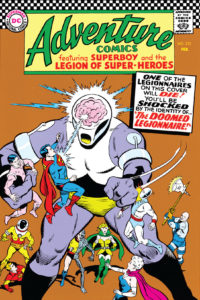
The Golden Bronze Age
In the late 1970s and early 1980s there were three comics that dominated the sales racks. At DC, you had the New Teen Titans and the Legion of Super-Heroes, while over at their Distinguished Competition, Chris Claremont was ruling the day with his bunch of mutants. One thing these three series had in common were the steady hands guiding them for their very long runs. Claremont was on X-Men for 17 years and Marv Wolfman was on Titans for 15 years. The Legion had their own superstar scribe during this time, as Paul Levitz was the writer for Superboy & The Legion of Super-Heroes from 1977-1979, and then on their own self-titled book from 1981-1989. Much like Wolfman and Claremont, Levitz was a master of long-form storytelling, dropping small plot hooks only to realize them much later, and breathing life into the characters. He wrote the Legion for what is undoubtedly their greatest era, teaming for much of it with artist Keith Giffen, who is a Legion legend in his own right.
Who would like this: Fans of the New Teen Titans or Claremont X-Men, soap opera fans, Star Wars enthusiasts
Key Stories to read from this era: “Earthwar” (Superboy & The Legion of Super-Heroes #241-246), “The Great Darkness Saga” (Legion of Super-Heroes #287-294 and Annual #1), “The Magic Wars” (Legion of Super-Heroes vol 3 #60-63), but honestly, you can’t go wrong reading the entire Levitz era starting with Superboy & The Legion of Super-Heroes #225 and going through Legion of Super-Heroes vol. 3 #63 (Gerry Conway wrote the gap between Levitz’s two runs, but it’s still very good)
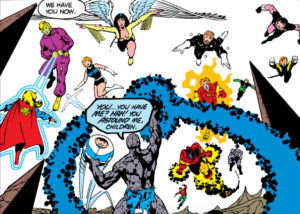
Five Years Pass
After the Magic Wars, everything went wrong, and five years later, everything is different. For the first time in nearly a decade, Levitz wasn’t writing the team, but his co-conspirator Keith Giffen remained involved. The Legion has dissolved and the pristine and hopeful future of the Legion’s history has crumbled as well. This series was darker than most, and leaned heavily into a post-apocalyptic vibe from the beginning. It also has the quintessential “getting the band back together” theme, which is always a fun trope.
Who would like this: fans of dark post-apocalyptic fiction, fans of clones, 90s comic fans, deep, deep continuity dives
Key stories to read from this era: “Five Years Later” (Legion of Super-Heroes vol 4 #1-5, “The Terra Mosaic” (Legion of Super-Heroes vol 4 #25-36), “End of An Era” (Legion of Super-Heroes vol 4 #59-61, Legionnaires #16-18, Valor #21-23)
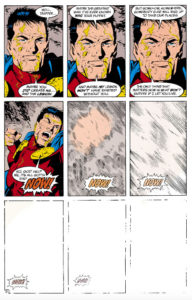
The Archies
The Legion was dealt numerous brutal blows with Crisis on Infinite Earths, including the loss of both Superboy and Supergirl from their history. When the “Five Years Later” era started, they used Mon-El’s retcon punches to replace Superboy and Supergirl with Lar and Laurel Gand respectively, but the continuity was still messy, until they took the opportunity with Zero Hour to hit a full reset button. Unlike most reboots of the modern era, the three Legion-centric series (The Legion of Super-Heroes, Legionnaires, and Valor) weren’t restarted, and continued their current numbering (other than Valor, which sadly got the axe), but the stories were completely new. Well, sort of. It was a fresh start for the Legion, with all new creative teams (longtime Legion editor Mark Waid coming on as writer for example), and a new look. The new look inspired this era to be known as the “Archie” Legion, just because the character designs were a bit more cartoony than they previously had been. A lot of this era’s stories however, were modernized retellings of classic Legion stories.
Who would like this: fans of more cartoony art stylings, readers that want classic stories with less Silver Age hokeyness, readers not tied to the previous continuity
Key stories to read from this era: “The Beginning of Tomorrow” (Legion of Super-Heroes vol 4 #0, 62-66), Stranded (Legion of Super-Heroes vol 4 #85-100 and Final Night), Legion Lost (Legion Lost vol 1 #1-12), Superboy and the Legion (Teen Titans vol 3 #16 and Teen Titans/Legion Special #1)
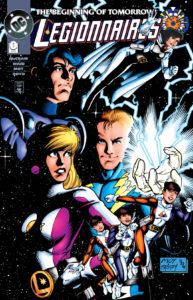
The Threeboot
In 2004, the Legion were rebooted once again. Mark Waid came back to write, and this time instead of rehashing old stories, it was a completely fresh take on the Legion. This pack of Legionnaires were rebellious youth, working against a very repressive society. The series became Supergirl & The Legion of Super-Heroes with issue 16, and she was a part of the team for 21 issues.
Who would like this: teenagers, fans of meta-commentary
Key stories to read from this era: “Teenage Revolution” (Teen Titans/Legion Special #1, Legion of Super-Heroes vol 5 #1-6), “Death of a Dream” (Legion of Super-Heroes vol 5 #7-13), “Strange Visitor From Another Century” (Legion of Super-Heroes vol 5 #14-15, Supergirl & The Legion of Super-Heroes #16-19), “The Quest for Cosmic Boy” (Supergirl & The Legion of Super-Heroes #31-37)
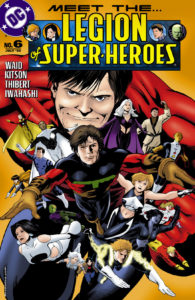
The Pre-Boot
In Brad Meltzer’s Justice League of America run and subsequently in Geoff Johns‘ Action Comics run, the original Legion of Super-Heroes were reintroduced. Along with that, their ties to Superman’s past were restored. After Final Crisis, this team was given back their own title and also featured in the new volume of Adventure Comics. This is also the team that was featured in the brief New 52 Legion of Super-Heroes and Legion Lost comics.
Who would like this: fans of the classic Legion, fans of silver age nostalgia in general
Key stories to read from this era: “The Lightning Saga” (Justice League of America vol 2 #8-10, Justice Society of America vol 3 #5-6), “Superman & The Legion of Super-Heroes” (Action Comics #858-863), “Superboy and the Legion of Super-Heroes: The Early Years” (Adventure Comics vol 2 #12, #516-520), “The Choice” (Legion of Super-Heroes vol 6 #1-6)
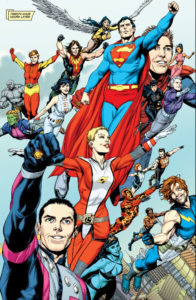
Everybody Together Now
This is the big one, but it’s not for the faint of heart, nor probably for a beginner. I’d probably save it for when you’re fairly familiar with one of the above eras, but if you like being thrown in the deep end to learn to swim? Have at it. Legion of 3 Worlds was a crossover done in 2008 to consolidate Legion history, while still leaving each era with its own validation. The original Legion, the Post-Zero Hour Legion, and the early aughts Legion were all present, and all played key roles in the story, and all of them continued to exist after it was over. The originals became the primary team again, but the others were still out there, presumably able to return someday.
Who would like this: fans of epic stories with dozens of characters, fans of any of the three Legion teams, fans of resurrection stories
Key story to read from this era: Final Crisis: Legion of 3 Worlds #1-5
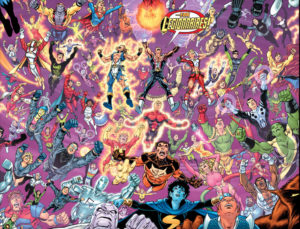
The New Future
Maybe all of those are too much for you, but you’re still interested in the concept? Well the good news is that you’ll soon be able to get in on the ground floor of a brand new reboot of the Legion by Brian Michael Bendis and Ryan Sook. We don’t know a lot yet, other than this is a new version, completely separate from the previous three iterations. This one is inspired by Jon Kent rather than Clark Kent, and is already much more diverse than its predecessors. Catch the lead-in to the new era with Legion of Super-Heroes: Millennium, and get in at the start in November with Legion of Super-Heroes #1.
If you’re interested in any of the eras and stories I listed above, they are all available on the DC Universe app, along with hundreds of other Legion issues.


